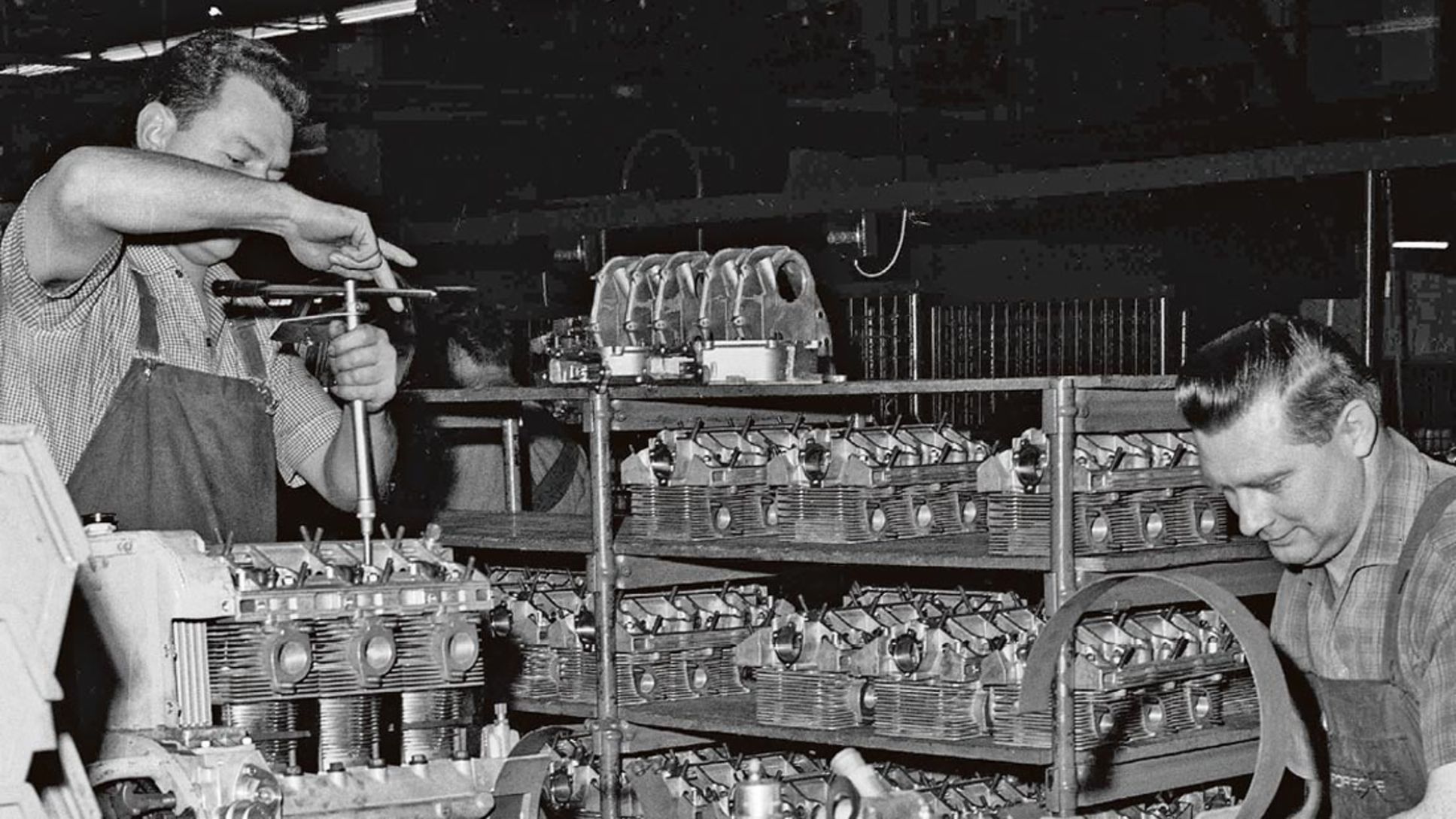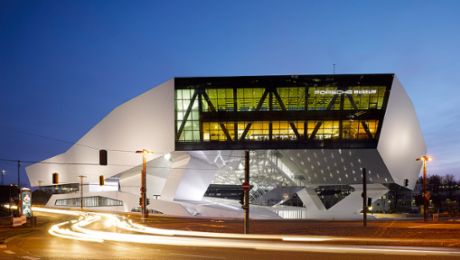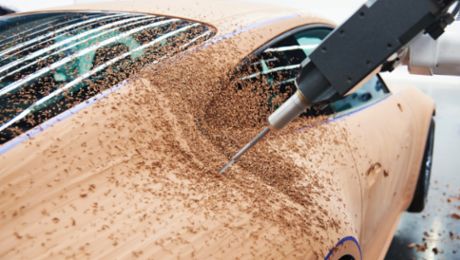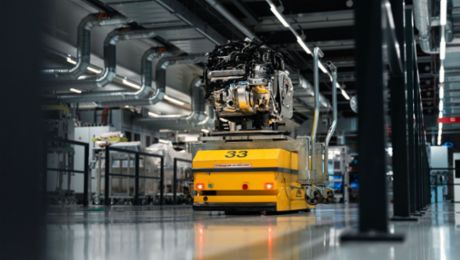Engine construction in Zuffenhausen started in 1950 as a classic workshop enterprise: a whole engine – to start with for the 356 – was always fully assembled by a single employee. Workbenches played a central role. Everything was done by hand without electronic tools or automated documentation of the processes. Nevertheless, according to Christian Will, Head of Engines and Components: "Thanks to the high technical expertise of the employees the engines were technically brilliant for the time."
Over time the rising number of units and additional engine types – for example for the 911, 928 or 944 – necessitated the introduction of new processes. By the early 1960s already approximately 30 engines per day were built here. New workflows were needed to cope with the increased volume, and so line production started in Zuffenhausen, test benches were expanded, and from then on every engine was subjected to a heat test. By the mid-1980s daily production had already reached 150 engines. When several years later Porsche experienced increasing financial difficulties the processes were further streamlined and costs reduced. Will says: "The workshop and also Porsche itself were working at the limit of their capacity."
First robots, optimised workplaces
A decision was therefore made to concentrate on the 911 and the production of all other models was discontinued. As a result, initially only six-cylinder flat engines were produced – from 1993 onwards on a continuously operating production line. From 1996 the introduction of the Boxster and the new 911 models went hand in hand with a sharp rise in production volumes, which necessitated a reorganisation of the model mix production to one production line for each engine type. In 2001 production of V8 engines commenced once again in Zuffenhausen for the Cayenne that was launched the following year.
Will remembers: "When I started here in 2000 I took over an extremely lean production, but there was scope to improve the quality processes." The assembly tools for bolts and nuts were already electronic and now the first robots were used, workplaces were optimised and the division of labour improved. Engine cold-testing was introduced, and in the course of this electronically documented results from the testing devices. "From then on we wanted to know what we were doing at every stage without having to wait for the finished engine at the end of the line to see whether everything works correctly", Will says. When the current engine factory was built in 2005 and the multifunction hall in 2008, process orientation, logistics and documentation were further refined. "Today we have high-performance production in Zuffenhausen with extremely well qualified employees", Will stresses.
Consumption data
911 (Type 991): Combined fuel consumption: 9.0 – 8.2 l/100 km; CO₂ emission: 211 – 191 g/km
Boxster: Combined fuel consumption: 8.4 – 7.9 l/100 km; CO₂ emission: 195 – 183 g/km
Cayenne: Combined fuel consumption: 11.2 – 9.9 l/100 km; CO₂ emission: 263 – 236 g/km




